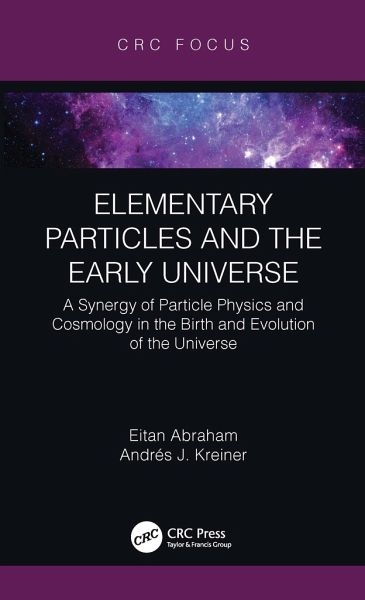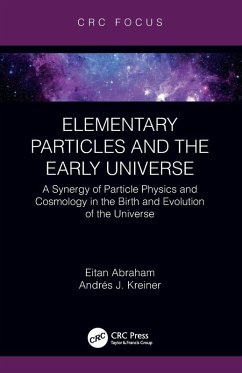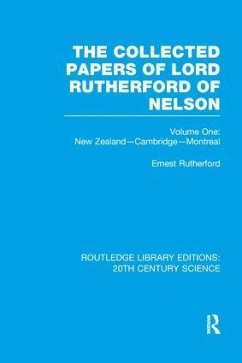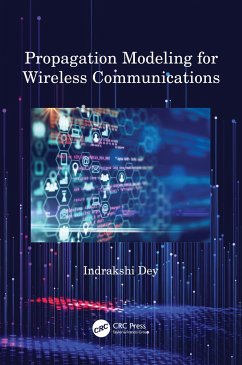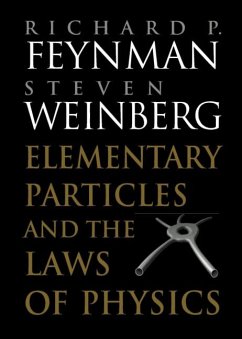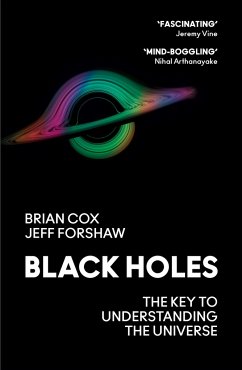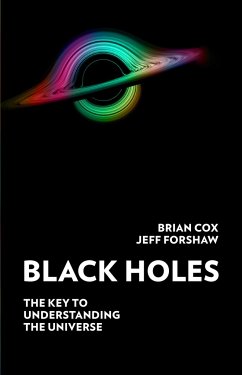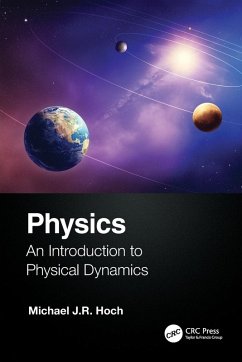Elementary Particles and the Early Universe
A Synergy of Particle Physics and Cosmology in the Birth and Evolution of the Universe
Versandkostenfrei!
Versandfertig in 1-2 Wochen
Weitere Ausgaben:

PAYBACK Punkte
30 °P sammeln!




This book is suitable for those taking courses on particle physics, general relativity, and cosmology.
Eitan Abraham is an Honorary Associate Professor of Physics at Heriot-Watt University in Edinburgh. Born in Israel and grown up in Argentina, he received his BSc from the University of Buenos Aires. The same year he became a postgraduate student at the University of Manchester and obtained his PhD in Quantum Optics. After postdoctoral work in Manchester and Edinburgh, he became an Assistant Professor at Heriot-Watt University. Initially, he did research in Theoretical Quantum and Nonlinear Optics. After a few years, his interests shifted to Josephson Junction circuits, High-Temperature Superconductivity, Magnetoelectricity and cosmological applications of the Bohm-de Broglie formulation of Quantum Mechanics. He then joined the Institute of Biological Chemistry, Biophysics and Bioengineering at Heriot-Watt, where he investigated and proposed a model for the uptake of nanoparticles by cells. As a Physics Colloquia organiser between 2010 and 2012, he has invited eight Nobel Laureates and the Director-General of CERN, a month after the discovery of the Higgs boson in 2012. He has worked as a visiting scientist in European countries, the former USSR and the USA. He has many years of experience in teaching nuclear and particle physics, quantum field theory and general relativity to final-year students. For fifteen years he has been Director of Computational Physics. His main recreations include tennis, gym workouts, reading, and social life. Andrés J. Kreiner is presently Professor of Physics at the Universidad Nacional de San Martín (UNSAM), Head of the Accelerator Technology and Applications Department at the National Atomic Energy (CNEA) and Senior Investigator at the National Research Council (CONICET), Argentina. He grew up and lives in Argentina. He received his degree in Physics in 1973. Subsequently he studied Nuclear Physics at the Technical University in Munich receiving his PhD in 1978. He was a Research Associate at Brookhaven National Lab, USA, from 1980 to 81 working at the Tandem Laboratory in Nuclear Structure problems. He was a visiting full professor and researcher at the Institute of Nuclear Physics at Orsay, and at the Centre of Nuclear Research at Strasbourg, France. He has been involved in basic and applied nuclear and accelerator physics R&D, and has taught continuously nuclear and modern physics, both at the degree and graduate level, from 1984 to 1994 at the Physics Department of the University of Buenos Aires. From then on at UNSAM where he organized the School of Science and Technology. Since 1994 he is involved in accelerator technology development for nuclear and medical purposes.
Produktdetails
- Verlag: Taylor & Francis Ltd
- Seitenzahl: 136
- Erscheinungstermin: 21. Dezember 2022
- Englisch
- Abmessung: 222mm x 145mm x 11mm
- Gewicht: 268g
- ISBN-13: 9780367559960
- ISBN-10: 036755996X
- Artikelnr.: 66269268
Herstellerkennzeichnung
Libri GmbH
Europaallee 1
36244 Bad Hersfeld
gpsr@libri.de
Für dieses Produkt wurde noch keine Bewertung abgegeben. Wir würden uns sehr freuen, wenn du die erste Bewertung schreibst!
Eine Bewertung schreiben
Eine Bewertung schreiben
Andere Kunden interessierten sich für




